In-Depth Beginners Guide to Ketosis 2024 [Yes, it’s SAFE]
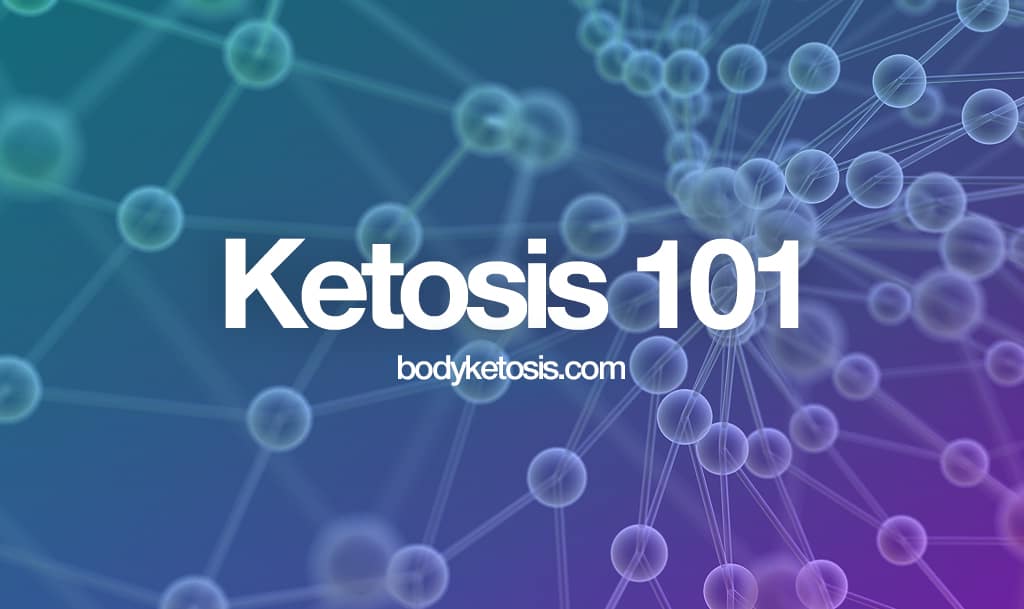
Ketosis is a normal process that happens when your body does not have enough carbs to burn for energy. Instead, it makes substances called ketones, which it can use for fuel.Although ketosis is a natural metabolic state, there is a lot of confusion and misconceptions around it.
- Is ketosis safe?
- Does it help to burn fat?
- How to enter ketosis?
- How to know if you are in ketosis?

Ketosis is our evolutionary survival mechanism. It has many health benefits: helps to lose weight, treat diseases, and works as a natural nootropic.My goal with this article is to explain ketosis in simple terms: what it is and how you can benefit from it.In the end, you will also find a quick start guide on how to enter ketosis and how to avoid the common keto-flu.Let’s get the ketones rolling.
Ketosis 101
What is Ketosis?
Ketosis is a normal metabolic process where a significant portion of your body’s energy comes from ketones rather than its usual fuel – glucose. It is also defined as having blood ketone levels greater than 0.5 mM.

Ketosis is a natural metabolic state, where the body produces ketone bodies out of fat, and uses them for energy instead of carbs.
- Ketosis helps save the brain from energy deprivation during things like calorie restriction, fasting, starvation, and certain illnesses.
- Ketosis can also be induced with a low-carbohydrate diet. In this case, it is referred to as “nutritional ketosis” to differentiate it from other ketosis states.
Types of Ketosis
Different forms of ketosis are fasting ketosis, nutritional ketosis, and pathological ketosis. They vary in degree of ketone production and method of induction.
Because following the keto diet results in nutritional ketosis, in this article, we focus solely on nutritional ketosis.

(Quote source *)
There are three types of nutritional ketosis:
- Carbohydrate-restricted ketosis – When talking about nutritional ketosis, most people refer to ketosis that happens when you restrict carbohydrates to less than 50g per day. Cutting back on carbohydrates forces the body to switch from burning glucose for fuel to burning fat for fuel. In the process, it also converts a portion of that fat into ketones.
- Supplemental ketosis – Ketosis can be achieved through medium-chain triglycerides (MCTs) or exogenous ketones, such as ketone esters or mineral bound ketone salts. Supplemental ketosis can be coupled with carbohydrate-restricted ketosis, but does not necessarily have to be. When ingested, exogenous ketones lead to a rise in blood ketone levels of over 1 mM for up to 9 hours (1). However, chemical ketosis does not provide the same benefits as true ketosis.
- Alcoholic Ketosis – Or alcoholic ketoacidosis, can technically be classified as a variation of nutritional ketosis, since it occurs due to a dietary intervention. This form of ketosis is a result of alcohol consumption and causes an acidic internal environment due to the drastic increase in ketone bodies. It can occur in those who frequently drink or are malnourished and drinking alcohol.
What Happens in Your Body During Ketosis?
- Ketosis starts with the production of ketones, which takes place mainly in the liver through a biochemical process called ketogenesis.
- At the same time, the liver is converting some proteins to glucose (gluconeogenesis) to keep blood sugar stable.
- Ketogenesis is triggered by drops in blood glucose and depletion of liver glycogen. Examples of situations where this happens include: fasting, prolonged exercise, diabetes, not eating carbohydrates and alcoholism.

(Chart source *)
- Normally, the body is burning carbs and fat. In the process, it makes a molecule called acetyl-CoA, which enters the powerhouses of the cell (mitochondria) to be converted into energy as ATP (the energy currency of the cell).
- But for this to happen, the cells need an intermediate molecule called oxaloacetate. When carb intake is too low, oxaloacetate becomes depleted in the lever because the liver has used it up on gluconeogenesis. This forces the liver to convert the acetyl-CoA it got from fat into ketones (3).
- Because the liver lacks enzymes necessary to use ketones for energy, these ketones spill into the bloodstream and reach the brain, heart, kidneys, and skeletal muscles. From there, they enter cell mitochondria and produce ATP.
What are ketones?
Definition
Ketones, also called ketone bodies, are acidic, water-soluble molecules produced in the liver during energy crises. Ketones mainly work as the body’s backup fuel.

(Quote source *)
The reason ketones exist is that the brain cannot survive without a constant supply of energy. Since glucose can easily vanish, the body uses fat stores and fat from food to keep the brain going during.
Types of Ketone Bodies
The term “ketones” or “ketone bodies” refers to three molecules produced during ketosis:
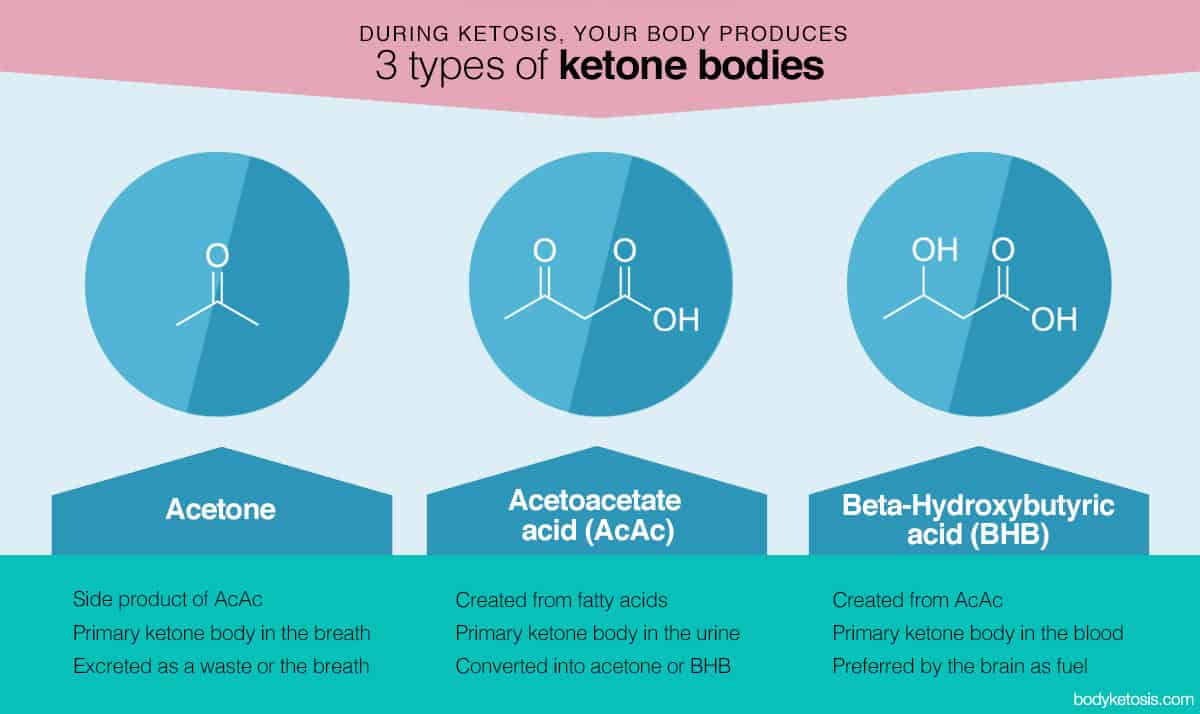
1. Acetoacetate – A weak acid produced from the oxidation of fatty acids in the liver. The first ketone made during ketosis is acetoacetate. Liver mitochondria burn fat and use it to make acetyl-CoA.
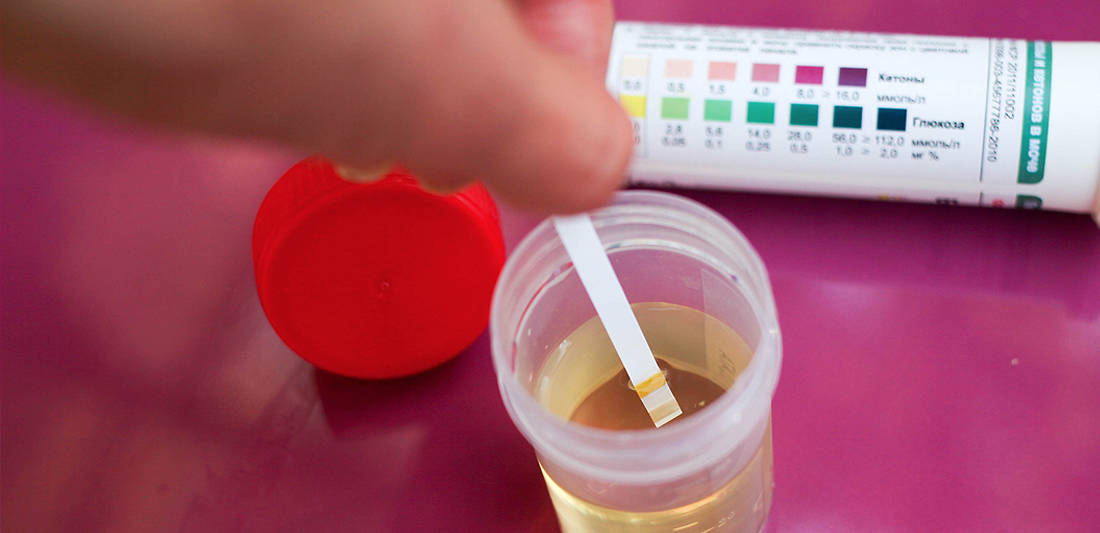
Then, it makes acetoacetate by merging two acetyl-CoA molecules. The liver also converts some of the newly formed acetoacetate into BHB for easier use. This is the primary ketone in the urine.
2. Beta-hydroxybutyrate (BHB) – Not a true ketone body. However, it is the most abundant molecule produced during ketosis and the one that supplies most energy. BHB then leaves the liver and becomes the major circulating ketone body, but some acetoacetate is also released into the bloodstream.
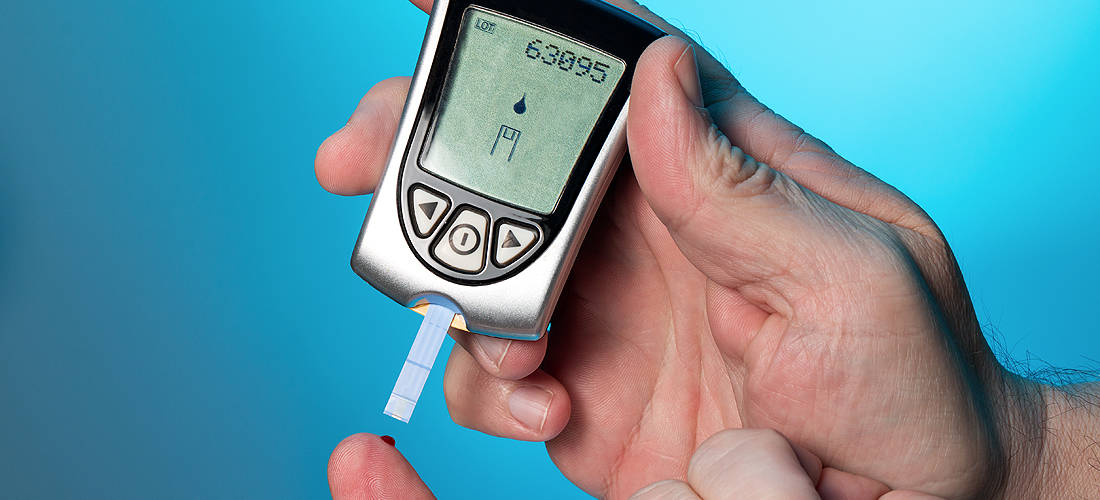
Once BHB reaches the cells of the brain and other organs, it is again converted into acetoacetate. From there on, the cells use acetoacetate to make energy with the help of some enzymes.
3. Acetone – The simplest and smallest ketone. Considered a byproduct of the breakdown of the other two ketone bodies. The last ketone body produced is acetone.
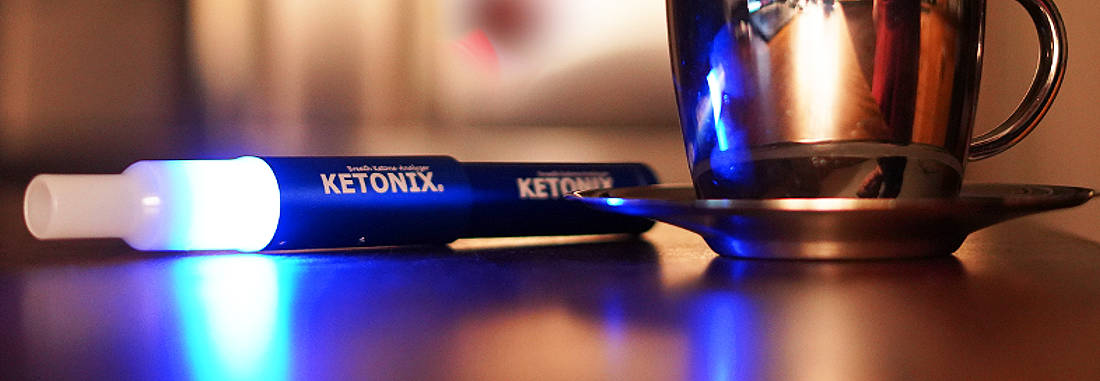
Acetone is produced during the spontaneous breakdown of acetoacetate and it leaves through the lungs, producing the infamous keto breath. However, it isn’t just a waste product; up to 11% of glucose during ketosis is made from acetone (4).
Body Can Produce Ketones Without Being in Ketosis
It’s a common misconception that the body produces ketones only during ketosis. In reality, the body is making a small amount of ketones all the time. But that’s not ketosis. Ketosis is when the level of ketones in your blood is greater than 0.5 mM and lower than 15mM.
On a daily basis, the makes ketones during an overnight fast, for example. That’s because blood glucose and glycogen drop slightly while you’re asleep. It is estimated that ketone bodies supply 2–6% of the body’s energy during this time (3).
The body produces ketones also during strenuous exercise. For example, ketone body levels can jump to 0.5–1.0 mM after 2 hours of exercise performed after skipping breakfast. These levels can further jump to 1–4 mM during post-exercise recovery (5).
Is Ketosis Safe?
Safe for Most Healthy People
Both health professionals and the public tend to confuse the safe physiological state of ketosis with the dangerous metabolic derangement of ketoacidosis. The first is a normal metabolic adaptation to low glucose levels, the latter is a potentially fatal condition (I’ll talk more on their differences later).
Clinicians may also believe ketosis is dangerous because they falsely think you need to completely eliminate carbohydrates to achieve it, but this is simply not true. Ketosis can be achieved with low-carbohydrate intake, which is adequate to support normal health.
And as far as experiments go, studies have time and time again confirmed the safety of long-term ketosis on keto diets (6, 7). The body is perfectly able to regulate ketosis as long as it is producing insulin. However, without insulin, ketosis can lead to acidosis as in type 1 diabetes. But in healthy people, this rarely happens.
Medical Supervision
If you are relatively healthy, you can enter ketosis without having to fear adverse effects. However, if you have any of the following case conditions and situations, then make sure to enter ketosis under medical supervision.
- Type 1 diabetes – Keto diets and ketosis help reduce the need for high doses of insulin in type 1 diabetes patients, but careful insulin adjustment is necessary to prevent hypoglycemia (8).
- Type 2 diabetes – Like with type 1 diabetes, you may need to monitor your condition and adjust your levels of medication and insulin to avoid hypoglycemia.
- Liver, heart, or kidney disease – Ketosis can be good for liver, heart, and kidney health, but make sure to speak to your doctor if you have a disease affecting these organs.
- History of gastric bypass surgery – After gastric bypass surgery, patients are put on specialized diets. Ask your doctor when it will be safe to go on a keto diet.
- Pregnancy – A pregnant woman’s body already produces a lot of ketones, and there’s also evidence that the growing fetus needs lots of blood glucose from the mom to grow (9).
- Hyperlipidemia – If you have elevated cholesterol or triglycerides, make sure to tell your doctor so they can monitor your blood lipids.
Who Should Avoid Ketosis?
There are also medical conditions that make ketosis dangerous or impossible. For example, genetic disorders resulting in impaired fat metabolism make reaching ketosis impossible since the body can’t use fat to make ketones in such cases.
The International Ketogenic Diet Study Group states that people should be screened for disorders of fat metabolism and fatty acid transportation and oxidation before going on a keto diet (10). Disorders that fall under this category include:
- Carnitine deficiency disorders
- b-oxidation defects
- Medium-chain acyl dehydrogenase deficiency (MCAD)
- Long-chain acyl dehydrogenase deficiency (LCAD)
- Short-chain acyl dehydrogenase deficiency (SCAD)
- Long-chain 3-hydroxyacyl-CoA deficiency
- Medium-chain 3-hydroxyacyl-CoA deficiency.
- Pyruvate carboxylase deficiency
- Porphyria
The keto diet and ketosis may also pose a problem with the following scenarios (11, 12) because the metabolism is compromised or changes:
- Breastfeeding women
- Gallbladder disease
- Impaired fat digestion
- History of pancreatitis
- Kidney disease
- Impaired liver function
- Previous gastric bypass surgery
- History of alcoholism
Ketosis Role in Weight Loss
Ketosis is the Reason Why Keto is So Popular
Ketosis is the main goal of keto and the principal reason people lose weight on this diet. It is what distinguished keto from all other low-carb diets and the main reason behind its rise in popularity.
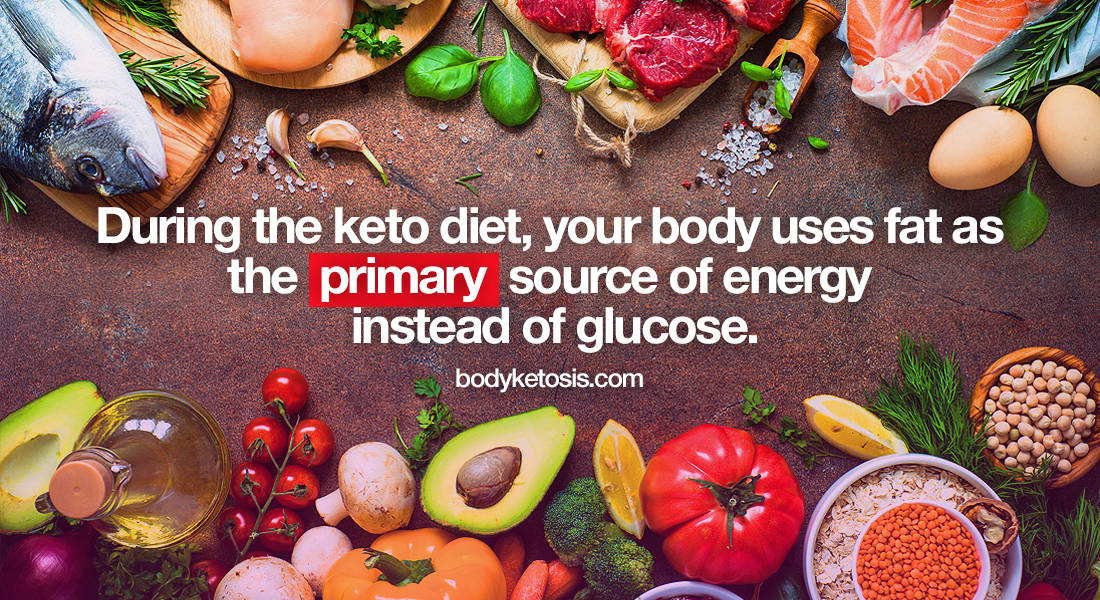
When you reduce carbohydrates to 20-50g per day, you create an energy crisis characterized by drops in blood sugar followed by a subsequent drop in insulin (3). Low insulin levels then signal the liver to release glycogen and fat cells to release fat. This fat is then converted into ketones in the liver.
However, enhanced fat-burning in ketosis is not the sole reason the keto diet leads to weight loss. Researchers believe the keto diet leads to weight loss for the following reasons (13):
- Changes in appetite hormones due to drops in blood glucose and insulin.
- Ketones themselves suppress hunger.
- The body has switched from storing fat to burning fat as a result of low insulin.
- Fats are being effectively used to produce energy.
- The body is burning more calories during gluconeogenesis – an energy-costly process.
Fat Loss Happens AFTER the Fat-Adaption
When you start the keto diet, the body will first struggle to burn fat to make ketones and to use those ketones to produce energy. But after some time has passed, the body will acclimate to a high-fat diet and become more efficient at burning fat for fuel (14). When it does this, it’s said that the body has become fat-adapted.
Before you become fat-adapted, most of your lost weight is just water weight (15). The reason you lose water on a keto diet is glycogen depletion since glycogen is 3-4 parts water. Water loss often accompanies the keto flu and is the main reason behind this common ketosis side effect.
You can expect to become fat-adapted within 1-3 weeks of starting the keto diet; however, this will depend on how fast you enter ketosis. The lower your carb intake, the quicker the ketosis. I suggest starting at 20g net carbs, but you can stick to 50g net carbs if you’re relatively active.
Benefits
Natural Nootropic
- Enhanced cognition – Studies shot ketones protect brain cells (especially neurons) against damage (16, 17). This means you’ll have more neurons and with that better cognitive abilities like being able to learn, remember, and engage in complex thinking (18).
- Increased energy – A study published in Neurochemical Research found that ketones increase the size and number of brain cell components that make energy (19). This may explain why a lot of people experience better mental energy on a keto diet.
- Better memory – A study on 19 elderly persons without dementia found that the ketogenic diet improved memory, attention, and the ability to switch tasks (20). If you find you’re less forgetful lately, it may be the ketosis.
- Improved mood – There’s evidence ketosis can also lift your mood and reduce anxiety (21). This effect may come directly from ketones but also from the hormone-balancing effects of the keto diet.
- Increased focus – Attention depends on a lot of things, but it depends a lot on your brain and mental health. Since ketones improve both, you can expect to better maintain your focus when in ketosis.
Improved Health
- Reduced type 2 diabetes risk – Two leading risk factors for type 2 diabetes are being overweight and a diet high in refined carbohydrates. Being in ketosis reduces your risk of this metabolic disorder by lowering body weight but also by reducing your intake of carbohydrates, refined ones especially (8).
- Cardiovascular disease prevention – Despite seemingly counterintuitive, high-fat diets that lead to ketosis can reduce your risk of cardiovascular diseases (CVDs) like atherosclerosis, coronary heart disease, heart attack, and stroke (22). That’s because it addresses the main risk factors for CVD: excess weight, excess blood glucose, hyperlipidemia, hypertension, etc.
- Better hormonal health – Studies have linked ketosis to improved fertility hormones, especially in overweight women who’ve seen improvements with PCOS and other hormonal conditions (23). These improvements have partially to do with weight loss but also through lower insulin.
- Lower inflammation – It’s an established fact that ketosis comes with anti-oxidant and anti-inflammatory benefits (24). Since inflammation and oxidative stress are leading drivers of chronic diseases, it’s safe to assume that ketosis can help curb them.
Weight Management
- Enhanced fat burning – Ketosis improves the body’s ability to burn fat, thus being a useful and safe tool for weight management and the fight against excess body weight (13).
- Appetite control – Willingly controlling your food intake is not enough for successful weight loss. Much of your energy intake is regulated by appetite, and ketosis is known to have an appetite-suppressing effect (13).
- Hormonal balance – How your body is using nutrients depends on hormones like insulin, glucagon, and leptin. Ketosis brings changes to the balance of these hormones in a way that leads to greater lipolysis (fat burning) and lower lipogenesis (fat storing).
- Greater calorie spending – Another reason researchers believe ketosis leads to weight loss is that the metabolic processes that come with ketosis spend 400-600 calories (13). Breaking down protein protein is also more energy costly than breaking down carbs.
Medical Treatment
- Diabetes reversal – To reverse diabetes and pre-diabetes means to reduce insulin resistance and improve glycemic control. Studies have shown that the keto diet helps improve glycemic control to a level that allows patients to discontinue their medication (25). There’s even evidence that it helps improve insulin resistance, and this can have a lot to do with the therapeutic effects of ketosis (26).
- Epilepsy cure – Researchers originally designed the keto diet as an epilepsy cure after discovering that ketones reduce seizures (11). Later, studies confirmed that ketones and ketosis can reduce seizures by up to 90% and up to 60% of all patients will see an improvement (27).
- Neurodegenerative disease – Brain diseases like Alzheimer’s and Parkinson’s can become easier to manage with the help of ketosis. Studies found that the brains of those affected with age-related neurodegeneration are unable to run on glucose as well as they used to, but ketones seem to work in such cases (28). Ketones also have the potential to slow down disease progression.
- Cancer-fighting – The majority of cancers need glucose to grow and spread. Being in ketosis helps starve cancer cells of their preferred fuel, and a growing body of research has examined if ketosis can help fight cancer (29).
How to Get into Ketosis?
Requirements
For your body to enter ketosis, four things need to happen:
- Blood glucose levels need to be low (3) – This can happen either by fasting for 12-24 hours or by restricting carbohydrates, ideally to 20g per day.
- Glycogen needs to be depleted (30) – The liver stores approximately 400 calories-worth of glycogen and the muscles up to 1400 calories. This gets easily depleted within 48 hours of starting the keto diet or fasting.
- Insulin levels need to drop (31) – Drops in insulin signal fat cells to release stored fat and the liver to release glycogen, paving the way for ketosis.
- Ketones need to reach 0.5 mM (mmol/L) (31) – Researchers have established that blood ketone level readings of 0.5 mM indicate ketosis, while anything lower than that means a big portion of your energy is supplied by glucose.
All four changes take place when carbohydrates are not available like during fasting or low-carb diets. Now, let’s take a look at what pace these changes happen.
How Fast Can You Get Into Ketosis?
Studies show that the average time to ketosis with a keto diet is 33-58 hours in children and 42 hours in adults (32, 33). The same studies did not observe any differences between those who got into ketosis with a keto diet or a keto diet combines with a fast, meaning that your body will enter ketosis within two days no matter if you’re fasting or not.
- However, initial ketosis is fairly mild at only 0.5 mM on average. Chances are you won’t feel its effects just yet. In fact, you may even feel downright miserable since your body is still adjusting to this new metabolic state.
- Ideal ketosis characterized by ketone levels between 1 and 3 mM can happen as early as 3-4 days of being on a keto diet (33). However, this will depend on how strict you are with your carbohydrate and fat intake. Making sure the food you are eating does not contain excess carbs and hidden carbs will help you get where you want to sooner.
Guide for Getting Into Ketosis
Follow these steps for fail proof ketosis within the first week of your keto diet:
- Eat 20g of carbs a day – For most people, restricting carbohydrates to the recommended minimum works. However, jumping into carb restriction head first comes with a caveat – it can result in worse keto flu symptoms than if you were to reduce your carb intake gradually.
- Exercise – While fasting alone won’t speed up ketosis, exercising certainly will. There’s evidence that you can enter ketosis within 24 hours if you exercise after skipping breakfast (34). Try doing light aerobic activity to speed up the process.
- Load up on fat – Keto beginners often make the grave mistake of not eating enough fat at the beginning of their diet. Dietary fat will help your body get the substrate it needs for ketone production. And because you’re not yet fat-adapted, it will rely on dietary fat more.
- Take electrolytes – Dr. Stephen Phinney, a leading keto nutrition researcher, recommends taking 3-5g of sodium, 3-4g of potassium, and 300-500 mg of magnesium when on a keto diet (35). This will make your transition into ketosis easier and with fewer side effects.
- Keep protein intake moderate – Diets that are very low-carb but high in protein do not lead to ketosis. That’s because the liver converts protein to glucose, and too much of it will lead to blood glucose levels that inhibit ketosis.
How to Know if You Are in Ketosis?
Ketosis Symptoms
Because ketosis marks a major shift of how your body normally works, it comes with a range of symptoms that can help you recognize if you’re in this state:
- Keto breath – A fruity smelling breath that can also resemble the smell of nail polish remover is a sure indicator of ketosis. It’s a result of acetone (the last ketone body) leaving your body through the lungs. Once your body becomes keto-adapted, the breath goes away on its own.
- Metallic taste in mouth – Keto breath is often accompanied by a metallic taste in the mouth. This is also a result of acetone leaving the body and is not a sign of anything serious unless you have untreated diabetes.
- Sudden weight loss – You may lose up to 5 pounds in the first week of the keto diet; however, this is mostly water weight. Once you become fat-adapted within the next few weeks, you can expect a gradual loss of mostly body fat of 0.5-2 pounds per week.
- Fatigue – As your body is still adjusting to the lack of carbs and change in metabolism functioning, you may experience mental and physical fatigue. Fatigue can also be a result of dehydration caused by water weight loss.
- Reduced hunger – Within the first two days of starting keto, you may have a ravenous appetite since your body will be screaming for carbs. But this will pass as soon as the body starts using ketones.
How to Measure Ketone Levels?
While checking for ketosis symptoms can tell you’re in this metabolic state, it won’t tell you your exact levels of ketones. To check how deep you are in ketosis, you can use one of the following three:
- Urine test strips – Ketone test strips test for ketones in urine. They’re most reliable in the earliest stages of ketosis. The problem with urine test strips is that they cannot detect BHB. This means that if there’s a high BHB to acetoacetate ratio, a urine test strip can give inaccurate results (36). Urine test strips often come with a color chart to tell you if you’re in mild (5 mg/dl) ketosis or ketoacidosis (160 mg/dl).

- Blood ketone meter – Blood ketone meters are the most accurate tool for measuring ketone levels (36). Most of these devices also measure glucose levels since they were primarily designed for people with diabetes. Most test ketones within the 0.0 to 8 mM range and work in a similar fashion to a prick blood test. Optimal ketosis is 1-3 mM.

- Breath ketone meter – Also called keto breathalyzer, this device measures breath acetone. It’s cheaper than a blood ketone meter, is noninvasive, and accurate (37). Breath acetone can range in concentrations of 400 nmol/L to 900 nmol/L (diabetic ketoacidosis).
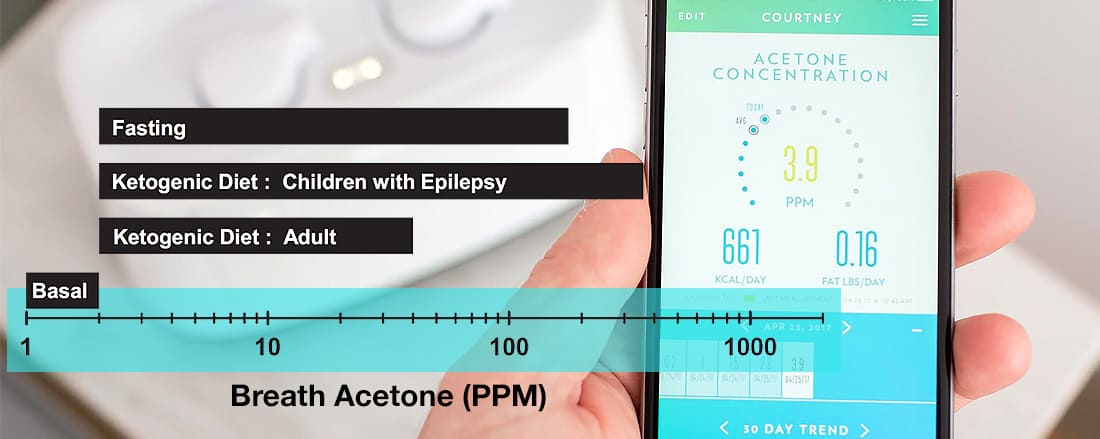
What if You Are Not in Ketosis?
If a ketone monitoring device says you’re not in ketosis, check if you’re making any of the following mistakes:
- Not tracking carbohydrate intake – Carbohydrates are everywhere, so you need to keep a close eye on them. One way is to track your intake with diet apps like MyFitnessPal or Carb Manager. Make sure to learn which foods are recommended on a keto diet and which are forbidden.
- Hidden carbs – Food manufacturers may not disclose a food’s true carb content on the nutrition label. We call these carbs hidden carbs for this reason. Take for example whipping cream. A cup contains 3.3g of net carbs. But if the label says 0g net carbs, it may be referring to a 1 oz serving. Make sure hidden carbs are not sabotaging your path to ketosis by not relying on food labels.
- Testing ketones at the wrong time – Experts say that the best time of the day to test for ketones in urine is in the morning or after a meal (38). You may also want to avoid measuring blood ketone levels after a meal since this is when blood ketone levels tend to decrease possibly leading to false negatives.
Side effects
Keto Flu
The keto flu is a popular way of referring to flu-like symptoms that happen during the earliest stages of ketosis (11).
Not everyone gets each and every keto flu symptom and the severity will vary from one person to the next. The main reason the keto flu happens is dehydration and accompanying electrolyte imbalances.
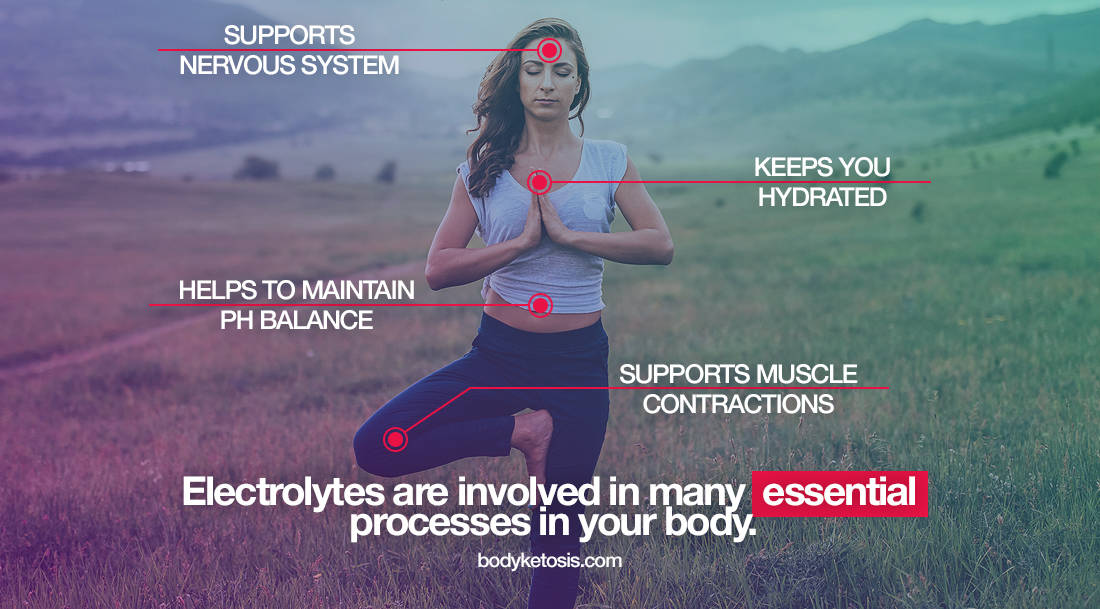
When your body loses its glycogen before entering ketosis, you lose a lot of water that was bound to glycogen through urine and sweat. With that water, you also lose electrolytes. This is why it is so important to increase your sodium and overall electrolyte intake when starting a keto diet.
Some keto flu symptoms may be due to changes in blood glucose levels. This is especially true for people who are sensitive to fluctuating blood glucose levels.
Luckily, the keto flu is temporary and tends to disappear once you’ve corrected possible dehydration and once you’ve become fat-adapted. It’s also easy to prevent by taking enough sodium, potassium, and magnesium.
Common Keto Flu Symptoms

- Headache – When we become dehydrated, our brain can shrink, which results in pain.
- Fatigue – Fatigue is caused by dehydration as well as electrolyte imbalances since both push the body to work harder.
- Lightheadedness – You may feel lightheaded due to drops in blood glucose.
- Irritability – Low magnesium levels may be behind irritability.
- Muscle cramps – Muscle cramps are often a result of low magnesium levels since this mineral is important for regulating muscle contraction.
- Nausea – Nausea can be a symptom of low sodium levels.
- Insomnia – Low glucose levels can make it harder for you to sleep.
- Constipation – Dehydration can also cause constipating.
How Long Does the Keto Flu Last?
There’s no one answer to how long you can expect the keto flu to last. It is roughly estimated that side effects caused by carb withdrawal last 1-4 weeks (39).
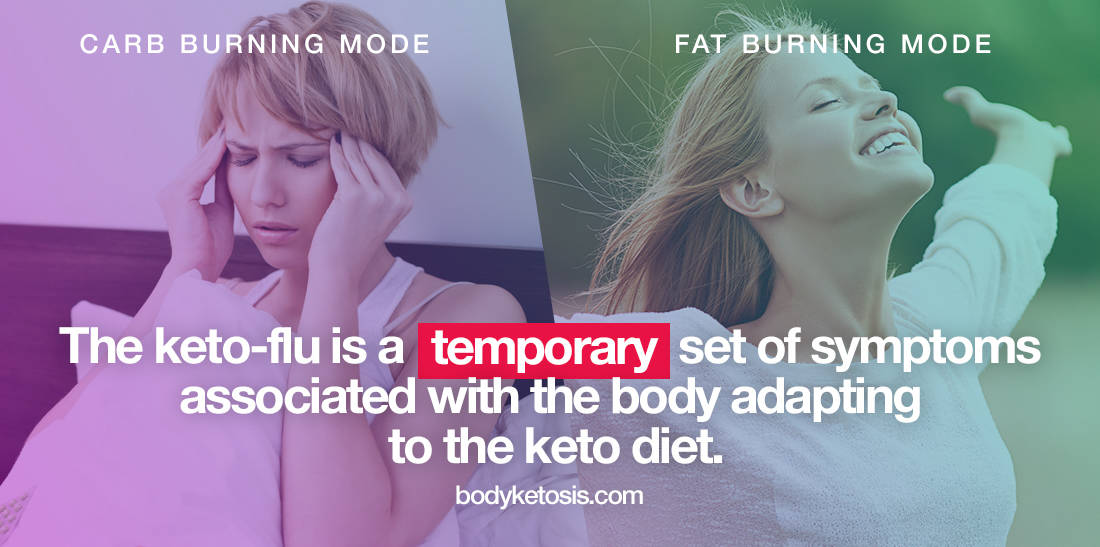
Most people experience the keto flu up until they become fat-adapted, which should happen within the first few weeks of starting keto, if not sooner.
How to Avoid and Stop Keto Flu?

- Take electrolytes – Take electrolytes as recommended by Dr. Phinney and you’ll avoid and treat the keto flu. Also, make sure to drink up to 12 cups of water a day. You can get these electrolytes from table salt, bouillon cubes, sugar-free sports drinks, nuts, seeds, vegetables, or supplements.
- Take supplements – Supplements like MCT oil and exogenous ketones can help reduce keto flu symptoms by speeding up ketosis and providing quick energy to the brain.
Misconceptions
1. Your brain doesn’t need carbs to function
The brain is perfectly adapted to surviving without carbohydrates. During ketosis, up to 2/3 of the brain’s energy comes from ketones (3). The rest is glucose derived from protein via gluconeogenesis. If this weren’t the case, then people wouldn’t be able to survive long periods of starvation.
2. Ketosis is not starving
Ketosis does happen during starvation, but it is not starvation when induced with a ketogenic diet. The ketogenic diet came into being because scientists were looking for a sustainable way to replace fasting to treat children with epilepsy. The keto diet, with its adequate protein and high fat intake, mimics the metabolic effects of starvation but without starving the body.
3. Nutritional ketosis is not ketoacidosis
- Ketosis – Ketosis is an adaptive response to starvation and that has helped humans survive for millions of years times of food scarcity. The keto diet merely induces ketosis through carbohydrate restriction.
- Ketoacidosis – A potentially fatal state of uncontrolled ketone production and where blood ketone levels can reach 25mM, which can certainly be fatal. Ketoacidosis happens only when there’s not enough insulin to control how much ketones the liver is making.
People at risk of ketoacidosis include those with:
- Type 1 diabetes
- Cystic fibrosis-related diabetes
- Pancreatectomy
- Type 2 diabetes with poor pancreatic function
Otherwise, it’s rarely seen in those with a functional pancreas.
4. You cannot have cheat days during ketosis
Other diets are forgiving when it comes to occasional cheat days, but not keto. A single cheat meal containing 100g of carbohydrates will immediately kick you out of ketosis and you’ll have to start all over again. If you’re keto-adapted, however, cheat meals may cause fewer problems.
5. Protein’s effect on ketosis
Moderate protein intake is defined as 0.7 to 1.2g of protein per kg of body weight. However, your daily protein allotment should be higher if you’re athletic or a bodybuilder. Too much protein will interfere with ketosis in a similar way as too many carbohydrates.

Alex is the founder of Bodyketosis, an author, low-carb enthusiast, and a recovering chubby guy who reclaimed his health using the ketogenic lifestyle. The need for the keto life began after his aunt and cousin were diagnosed with type 2 diabetes and he was next in line. Through personal experience and extensive scientific research, Alex offers insightful tips for everything keto.


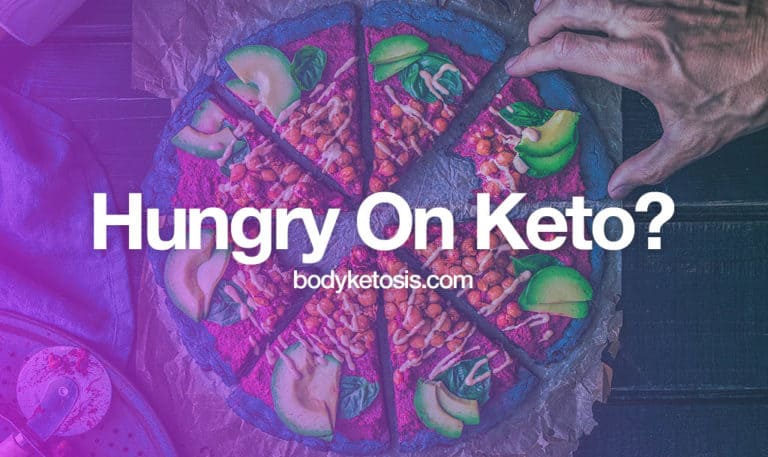

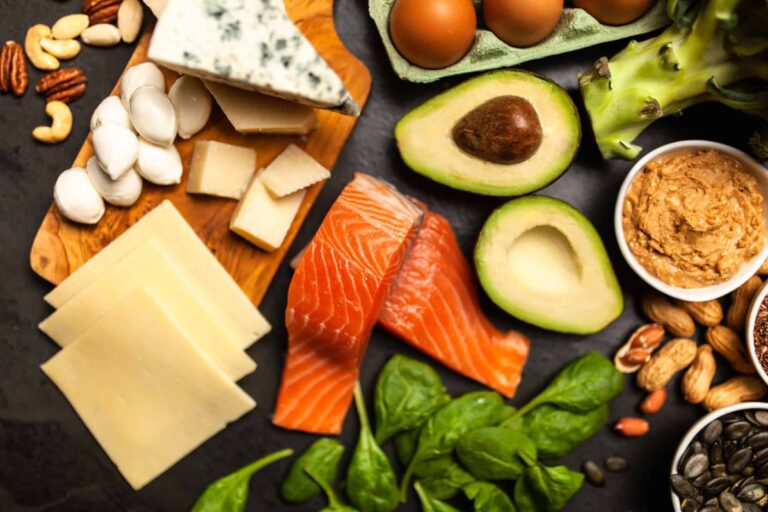
![71 Tips for Keto On A Budget [Frugal Grocery Shopper Guide]](https://bodyketosis.com/wp-content/uploads/2019/04/keto-on-a-budget-head-768x457.jpg)
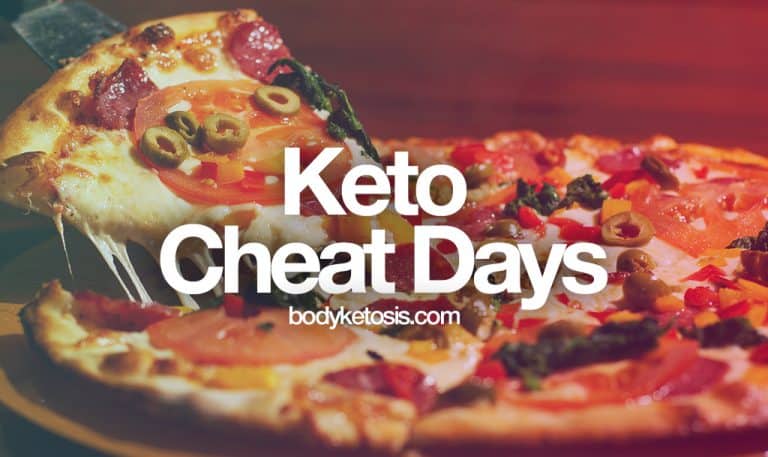
![The Keto Whoosh Effect Explained [Losing Weight or Fat?]](https://bodyketosis.com/wp-content/uploads/2019/05/what-is-keto-whoosh-effect-768x457.jpg)